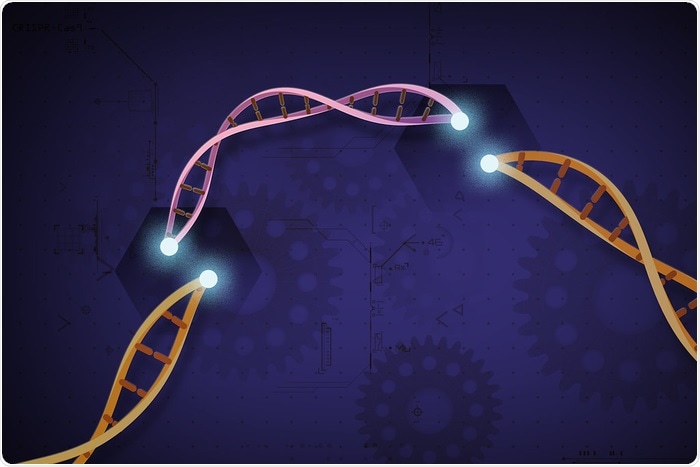Yiping Qi, associate professor in the Department of Plant Science & Landscape Architecture (PSLA) at the University of Maryland (UMD), continues his research to increase the reach and utility of CRISPR gene-editing technologies, thanks to two new funding sources.

CRISPR illustration. Image Credit: National Institutes of Health.
Qi and his colleagues are being financially supported by the U.S. Department of Agriculture’s National Institute of Food and Agriculture (USDA-NIFA) and will be investigating innovative delivery technologies for CRISPR-Cas12a to create a pipeline for genome editing in carrots.
This study could pave the way for producing hypoallergenic and more nutritious carrot varieties that can be launched quickly into the marketplace. Moreover, Qi will continue his quest for innovative CRISPR-Cas12a variants, with financial support from the Maryland Innovation Initiative (MII). His ultimate aim is to find more CRISPR tools optimized for crop production.
“With this new USDA funding, we are excited to showcase CRISPR-Cas12a gene-editing technologies that my lab has been working on in carrots as an important vegetable,” stated Qi.
The major innovations in this work are really in the delivery mechanisms that can make targeted and precise edits without the production of a highly regulated GMO [genetically modified organism]. But we also want to explore more CRISPR-Cas12a variants that can be useful for crop production, so the MII grant provides that support.”
Yiping Qi, Associate Professor, Department of Plant Science & Landscape Architecture, University of Maryland
Qi noted that a majority of the existing methods for targeted mutations or accurate genome edits depend on using transgenes (the transfer of a gene from one organism to another) that would then be regulated as GMOs. This is done essentially by delivering genetic material with agrobacteria to “infect” the plants and transfer the preferred trait.
But in the case of carrots, Qi has been investigating various delivery methods that involve the use of readily available proteins and guiding molecules to introduce the same material without the use of transgenes and agrobacteria. Besides being new to carrots, this method would enable new varieties to enter the market very quickly without requiring GMO regulations.
Hopefully, we can take advantage of these technologies to develop some interesting and useful plants that have consumer benefits. For example, we are targeting a gene to help the carrot accumulate more beta carotene, which can boost nutritional value. We are also targeting two genes that can potentially be knocked out to create a hypoallergenic carrot that could be eaten by those with certain allergies.”
Yiping Qi, Associate Professor, Department of Plant Science & Landscape Architecture, University of Maryland
Besides the fact that the varieties could be useful in and of themselves, the study can come up with a process for genome editing in carrots that has not been developed earlier. This will lead to substantial time savings when compared to conventional breeding, and Qi believes this will motivate several researchers and breeders to contemplate the possibilities of this technology in crops such as carrots.
“The whole project is to develop new technology for genome editing in more niche or minor crops that can have major impacts,” reiterates Qi. “Not much work has been previously done in carrots, and I hope this will open up a lot of doors for gene editing in other root vegetables and more.”
Apart from this research with familiar variants of CRISPR-Cas12a, Qi is also looking for novel variants that are ideal for crop genome editing. Qi’s recent study that contributed six novel variants of CRISPR-Cas12a (never before established in plants) was awarded UMD Life Sciences Innovation of the Year.
Such patent-pending tools increase the scope of the use of CRISPR-Cas12a in plants, which can help more effective food production to fight hunger. Thanks to new funding from MII, Qi will continuously explore new patentable CRISPR variants, in his quest to identify more tools that are efficient at lower temperatures.
For work in human cells, gene editing is happening at the temperature of the human body, which is almost 100 degrees Fahrenheit. This is the optimal temperature for most CRISPR systems, but this isn’t the best temperature for doing work in plants. All that work needs to be done around room temperature where plants can comfortably grow. So finding tools that are optimized for this lower temperature application is important for advancing genome editing in crops.”
Yiping Qi, Associate Professor, Department of Plant Science & Landscape Architecture, University of Maryland
Qi and his colleagues have determined a proprietary pipeline for finding new candidate CRISPR variants. He will initially investigate these candidates in tomatoes and rice to increase the scope of gene editing in crops.